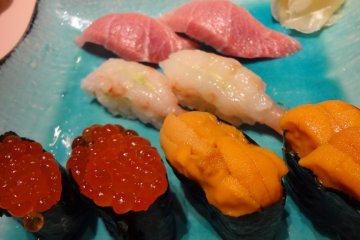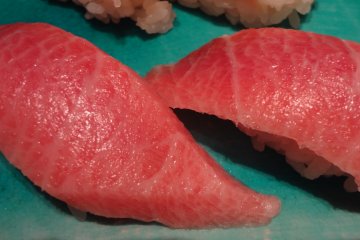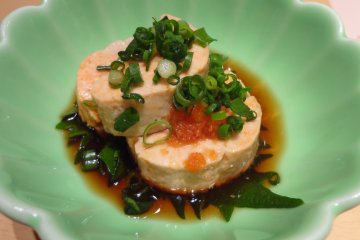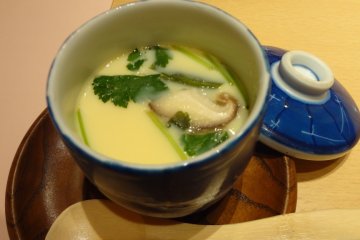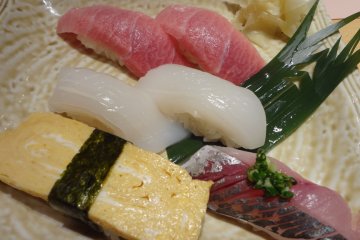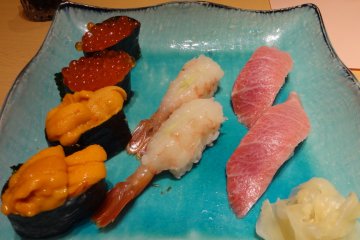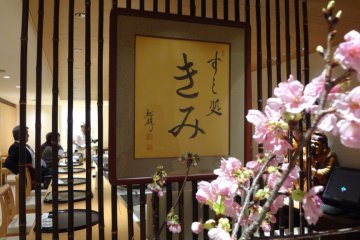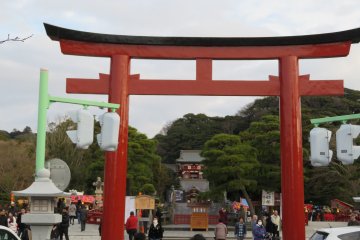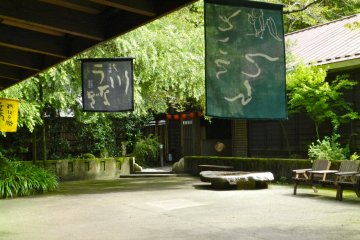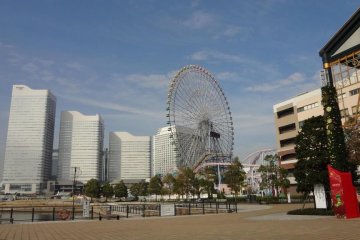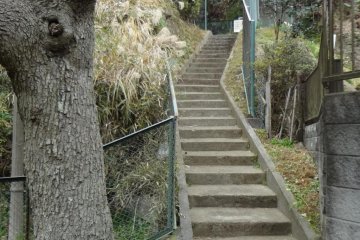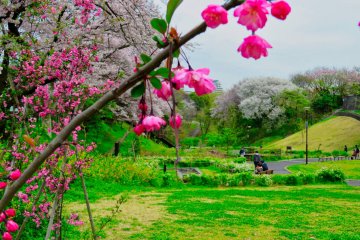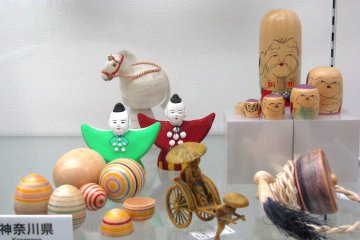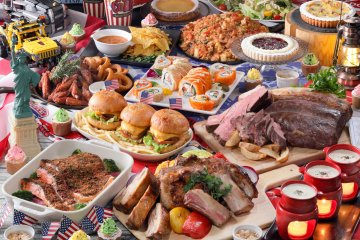Sushi-dokoro Kimi (すし処きみ) is a really nice sushi restaurant just in front of the East exist of JR Kamakura Station. Before or after you do sightseeing, this is the best place to enjoy delicious fish in a peaceful mood apart from the noise of the town.
Not a revolving type sushi bar
Although many restaurants surround Kamakura Station, almost all of them are already filled with customers before noon. Kamakura is always crowded in the daytime with huge numbers of tourists from both inside and outside Japan. So, it’s quite difficult to find a calm place and have a nice lunch around the station. But if you can afford to spend a bit extra, Kimi (a real sushi restaurant, not the revolving type) is the perfect spot for you. And don’t worry…it won’t lighten your wallet too much!
How to order
You might think it’s difficult to order sushi at a high-class restaurant. Choosing a “lunch set” or “dinner set” is an easy way to order, but also a little bit boring. You might feel like this: “I want to eat something new. I wish I could order seasonal delicious fish at a sushi shop. But how should I ask? What should I order?” If you want to have a cool sushi shop experience, here are some tips.
Starting a conversation with the chef!
Try to sit at the counter (not at a table) and greet the sushi chef with a smile. If you say something in Japanese, he will do his best to make you happy. You don’t need to read the Japanese menu. Just ask the chef about today’s special at first. Here are two useful sentences.
“Kon-nichi-wa!” This means, “Hello!”
"O-su-su-meh wa nan desuka?" This means, “What is today’s recommendation?”
Even if you can’t understand the fish name he gives you, better to try it! The chef will always recommend the best fish he got in that day. This ice-breaking conversation and cross-cultural experience will help things go smoothly from there.
Try some other fish too
After you choose the chef’s recommendation, try some other fish next. These are the names of common sushi fish. Generally speaking, we should start with the light stuff and move on (step by step) to more oily fish. But we don’t always follow this rule. We can enjoy any fish we want. But for your enjoyment, I have listed and categorized some regular fish names below.
Light seasoned fish: Tai (sea bream); Hi-rah-meh (flatfish); Ho-tah-teh (scallop); I-kah (squid); Ah-mah-eh-bi (shrimp). *Note: I is pronounced /E/.
Oily fish: Toh-roh (tuna); Ah-nah-go (sea eel); Ah-ji (horse mackerel); Sah-bah (mackerel); I-wah-shi (sardine).
Sushi Rolls: Anytime okay.
Uni (sea urchin); I-ku-rah (salmon roe); Tek-kah (tuna roll); Kap-pah (cucumber roll).
Manners at a sushi restaurant
As well as with other Japanese foods, the aroma of each sushi has an important connection to its taste. So, please refrain from wearing perfume when you go to a sushi shop. For the same reason, many sushi restaurants also prohibit smoking.
Pickled ginger
On the edge of the plate, you’ll see pickled ginger. It’s for the refreshment of your palate between each piece of sushi. But please don’t eat too much ginger even if you really love it. If you do, your tongue won’t be able to catch the refined taste of the sushi any more.
Set dishes
Kimi has several set dishes as well. Their “Nigiri Set” is a 6-10 piece sushi combination. Depending on the rank of the fish, Kimi serves four types (2100 yen–3680 yen). Their “Chirashi Set” is rice covered with fish, egg and vegetables (2630 yen–3680 yen). Their “Sushi kai-se-ki” consists of sashimi, seven pieces of sushi, soup, fruit, and a few other things, depending on the price (3000 yen–5000 yen).
I hope you try and succeed in making a separate order at the counter, and enjoy your conversation with the sushi chef. Good luck to you!




